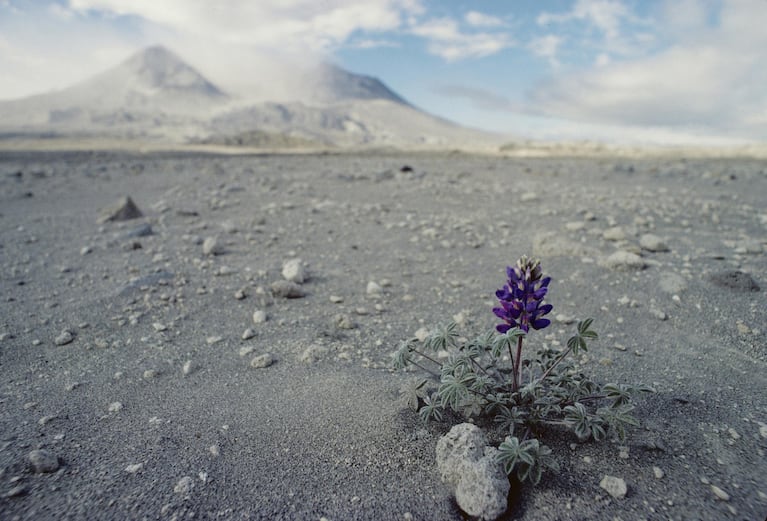
Lupin lepidus, post-eruption, one of the first plants to reappear in the desolate pumice field 3 miles north of the volcano crater at Mount St. Helens.
Courtesy of Gary Braasch Photography
Portland environmental photographer Gary Braasch described himself as a witness to climate change. He dedicated himself to making images that helped the rest of the world witness it too. Braasch died this week while snorkeling and photographing Australia's Great Barrier Reef.
Braasch worked on seven continents, photographing everything from receding glaciers in Greenland to Pacific Islanders forced to leave their homes by rising water. He's known for his book "Earth Under Fire: How Global Warming is Changing the World." OPB All Things Considered host Kate Davidson spoke with fellow photographer Alison Jones about his legacy. Jones is a senior fellow with the International League of Conservation Photographers, which Braasch helped create.
Q&A With Alison Jones
Kate Davidson: What was the main message of Gary Braasch's photojournalism?
Alison Jones: The main message he left with me was the importance of photography to tell a story. He said in an interview we did in 2011 that, "An image draws people in. It shocks them. Or it's so beautiful that they just have to look at it."
And then he added another aspect to the importance and impact of photography when he said, "When captions suggest this may be the last time to see certain ecosystems' beauty, that extra information usually compels people to learn more and to take action." He used that philosophy over and over again in his long term dedication to these global climate change issues. And that long term tradition is one that I think is so powerful.
KD: Gary Braasch used a technique called repeat photography to do some of that. For example, here in the Pacific Northwest he photographed the eruption of Mount St. Helens, and then he returned year after year to the same spots to document its recovery. Can you describe where he used that technique to illustrate the effects of climate change?
AJ: One of the places he used his repeat photography was the Athabasca Glacier, which is actually approached from Alberta but it's the headwaters for the Columbia River. He had a survey photograph done in 1917, and then he went back about a decade ago and photographed the difference in the length of that glacier and showed how it had melted and receded over that period of time.
When you put the two images together, you see climate change. You see the impact of global warming. When Gary started his project everybody thought he was crazy. Because how would you ever photograph global warming? But in a way he was sort of the photographer from La Mancha. But he wasn't tilting at windmills. He realized climate change was real, and actually those windmills were a solution to the problem of CO2 emission that he was so concerned about.
KD: When it comes to communicating the reality of climate change, do you think Gary Braasch was able to achieve something through images that scientists have a harder time communicating through data?
AJ: Absolutely. Absolutely. I think it's important to see and that was what he realized, that photography was just one more tool. We have a lot of technology that can help address climate change, but nothing's going to happen until we actually feel it ourselves and see it.
KD: You mentioned that you interviewed Gary Braasch several years ago. Is there anything else from the interview that you'd like to share now?
AJ: I think the comment he made that has continued to stay in my mind is that he said, "We must use our resources to create less CO2 with the quality of energy and concentration we would use if we were attacked in wartime. We know about that, we've had that experience." So that was his commitment to trying to create a community effort in this issue of climate change that we must all address together.



